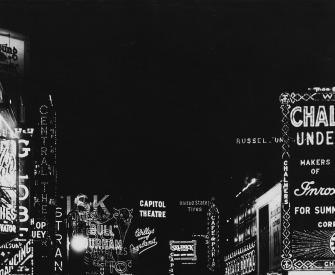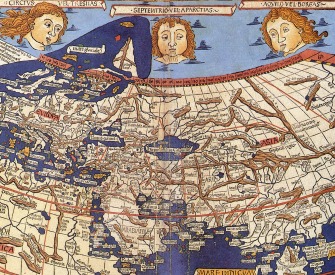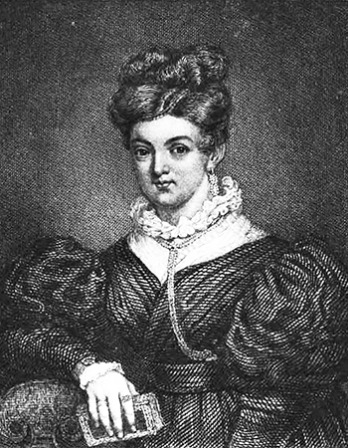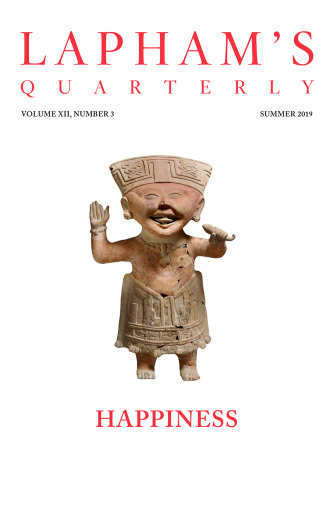Think rich. Look poor.
—Andy Warhol, 1975Diamond Tattoos Are Forever
Ink of the Washington Islands.
Among all the known nations of the earth, none have carried the art of tattooing to so high a degree of perfection as the inhabitants of Washington Islands. The regular designs with which the bodies of the men of Nukahiwa are punctured from head to foot supplies in some sort the absence of clothing; for under so warm a heaven clothing would be insupportable to them. Many people here seek as much to obtain distinction by the symmetry and regularity with which they are tattooed, as among us by the elegant manner in which they are dressed; and although no real elevation of rank is designated by the greater superiority of these decorations, yet as only persons of rank can afford to be at the expense attendant upon any refinement in the ornaments, it does become in fact a badge of distinction.
The operation of tattooing is performed by certain persons who gain their livelihood by it entirely, and I presume that those who perform it with the greatest dexterity and evince the greatest degree of taste in the disposition of the ornaments are as much sought after as among us a particularly good tailor. Thus much, however, must be said, that the choice made is not a matter of equal indifference with them as with us; for if the punctured garment be spoiled in the making, the mischief is irreparable; it must be worn with all its faults the whole life through.
As soon as the inhabitant of Nukahiwa approaches toward the age of manhood, the operation of tattooing is begun, and this is one of the most important epochs of his life. The artist is sent for, and the agreement made with him that he is to receive so many hogs as his pay; the number is commonly regulated according to the wealth of the person to be tattooed, and the quantity of decoration bestowed is regulated by the pay. In the first year only the groundwork of the principal figures upon the breast, arms, back, and thighs is laid; and in doing this the first punctures must be entirely healed, and the crust must have come off before new ones are made. Every single mark takes three or four days to heal; and the first sitting, as it may be called, commonly lasts three or four weeks.
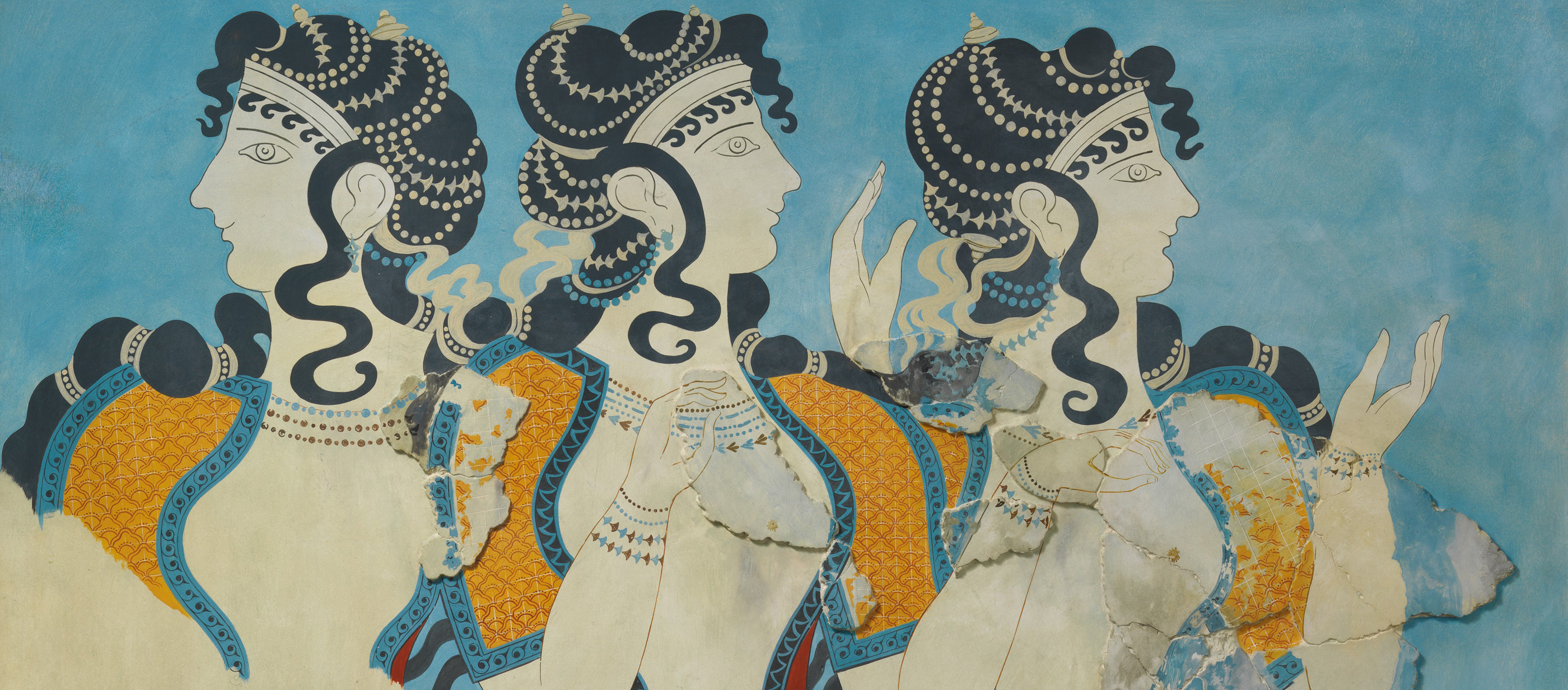
Reproduction of the “Ladies in Blue” fresco, Crete, Minoan Greece, Late Bronze Age (c. 1500 BC). The Metropolitan Museum of Art, Dodge Fund, 1927.
When once the decorations are begun, some addition is constantly made to them at intervals of from three to six months, and this is not infrequently continued for thirty or forty years before the whole tattooing is completed. We saw some old men of the higher ranks, who were punctured over and over to such a degree that the outlines of each separate figure were scarcely to be distinguished, and the body had an almost Negro-like appearance. This is, according to the general idea, the height of perfection in ornament, probably because the cost of it has been very great, and it therefore shows a person of superlative wealth. It is singular that the men of distinction should place their gratification in acquiring this dark hue, while the women place theirs in preserving their original fair complexion uninjured.
The tattooing of persons in a middling station is performed in houses erected for the purpose by the tattooers. A tattooer who visited us several times on board the ship had three of these houses, which could each receive eight or ten persons at a time; they paid for their decorations according to the greater or less quantity of them, and to the trouble the figures required. The poorer islanders, who have not a superabundance of hogs to dispose of in luxuries, but live chiefly themselves upon breadfruit, are operated upon by novices in the art, who take them at a low price as subjects for practice, but their works are easily distinguishable, even by a stranger, from those of an experienced artist. The lowest class of all, the fishermen principally, but few of whom we saw, are often not able to afford even the pay required by a novice, and are therefore not tattooed at all.
The women of Nukahiwa are very little tattooed, differing in this respect from the females of the other South Sea islands. The hands are punctured from the ends of the fingers to the wrist, which gives them the appearance of wearing gloves, and our glovers might very well borrow from them patterns, and introduce a new fashion among the ladies, of gloves worked à la Washington. The feet, which among many are tattooed, look like highly ornamented half boots; long stripes are besides sometimes to be seen down the arms of the women, and circles round them, which have much the same effect as the bracelets worn by European ladies. Some have also their ears and lips tattooed.
The figures with which the body is tattooed are chosen with great care, and appropriate ornaments are selected for the different parts. They consist partly of animals, partly of other objects that have some reference to the manners and customs of the islands; and every figure has here its particular name. Upon an accurate examination curved lines, diamonds, and other designs are often distinguishable between rows of punctures, which resemble very much the ornaments called à la Grecque. The most perfect symmetry is observed over the whole body: the head of a man is tattooed in every part; the breast is commonly ornamented with a figure resembling a shield; on the arms and thighs are stripes, sometimes broader, sometimes narrower, in such directions that these people might well be presumed to have studied anatomy, and to be acquainted with the course and dimensions of the muscles. Upon the back is a large cross, which begins at the neck and ends with the last vertebræ. In the front of the thigh are often figures, which seem intended to represent the human face. On each side the calf of the leg is an oval figure, which produces a good effect. The whole, in short, displays much taste and discrimination. Some of the tenderest parts of the body, the eyelids for example, are the only parts not tattooed.
Georg Heinrich von Langsdorff
From Voyages and Travels in Various Parts of the World. Born in Germany in 1774, Langsdorff participated as a naturalist in the Russian expedition commanded by Ivan Krusenstern from 1803 to 1805, during which he visited the Marquesas Islands. In 1821 he persuaded Tsar Alexander I to fund an expedition to the unexplored inland areas of Brazil. After contracting a tropical disease, Langsdorff went insane and was forced to return to Europe in 1829.
